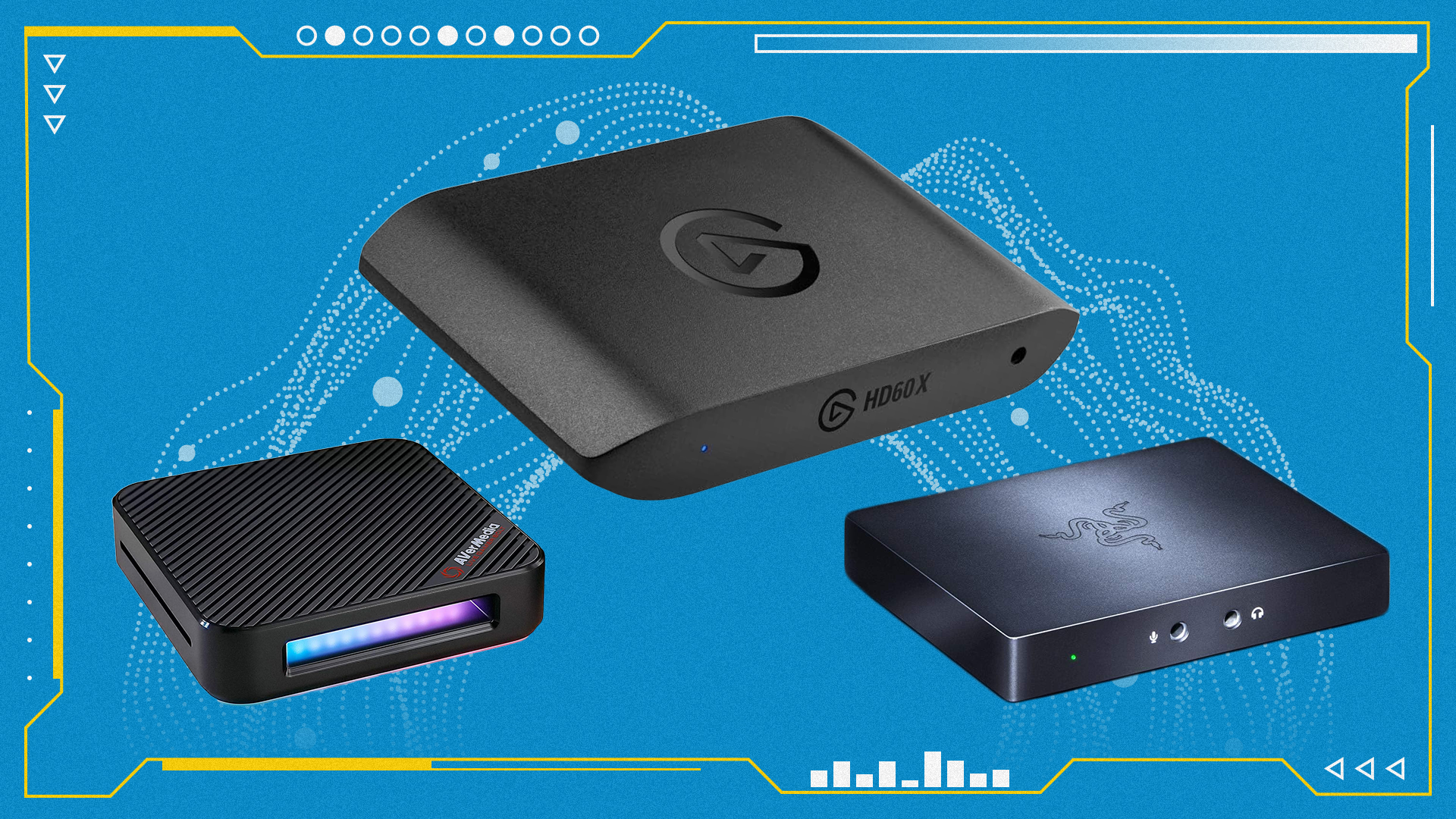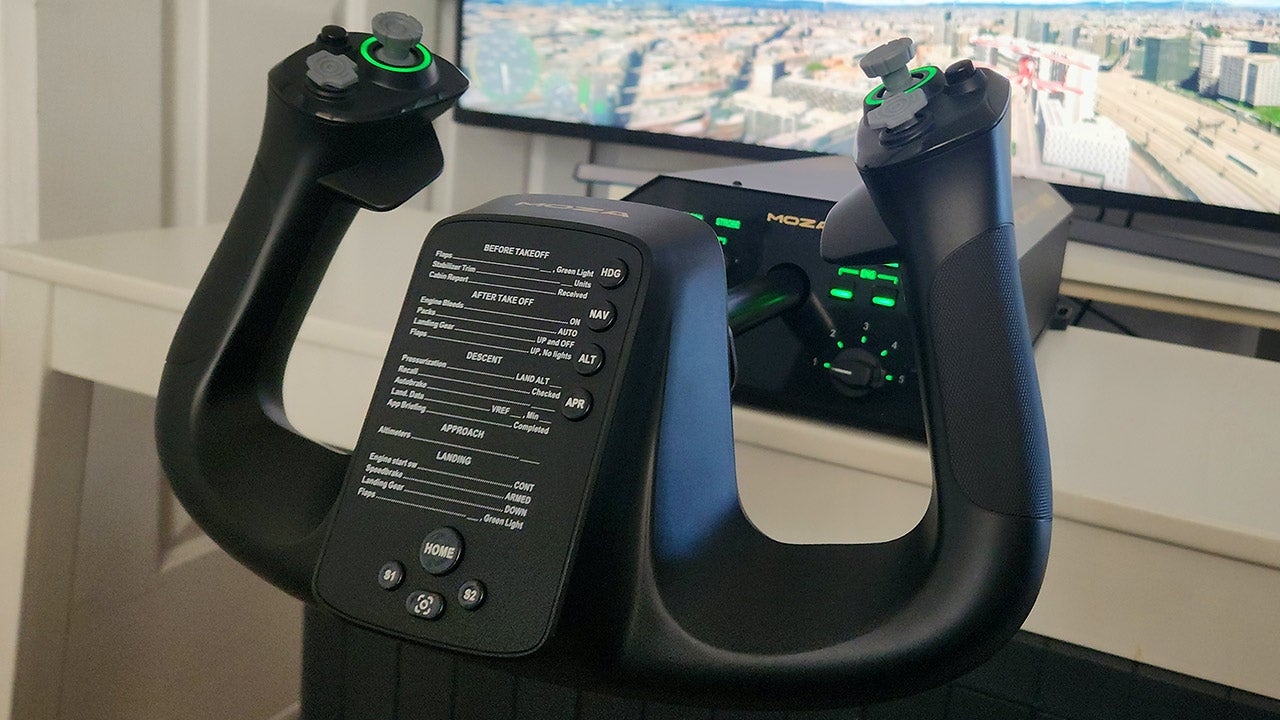
If you’ve ever wanted to record your gameplay, stream live to your followers, or create high-quality video content, a capture card is practically a must. These handy little boxes allow you to capture video from one device, like a console, camera, or gaming PC, and then stream or record it on another. While some of those devices might come with built-in recording capabilities, a good capture card adds extra flexibility, ensures solid footage quality, and more.
TL;DR – These Are the Best Capture Cards:
There are, of course, some exceptions. If you’re only recording and streaming on a single, top-tier gaming PC equipped with a great Nvidia or AMD GPU, everything needed for a high-quality capture experience will be at your fingertips. However, it will put a good amount of demand on the computer, leading to potential performance drops. In some cases, offloading some of the work to a capture card can significantly improve your gaming performance and footage.
Capture cards are especially popular among gamers, streamers, content creators, and even video professionals, thanks to how great they can make footage look. There isn’t a one-size-fits-all capture card either, so we’ve found the best options for a range of uses from reputable brands like Elgato, AVerMedia, Asus, and more. Want 4K at 144fps passthrough with VRR and HDR to ensure games play exactly as intended on PS5? You’re covered. 4K at 30fps HDR recording is also becoming more common, even if it’s overkill for Twitch streamers. Some highly capable budget options are available, and if you’re looking to set it and forget it, we've found internal capture cards that can live inside your PC. All of our picks are easy to use and work with popular capture software like OBS (which is also free!). Take a look at our favorites below.
Additional contributions by Kevin Lee and Georgie Peru
1. Elgato HD60 X
Best Capture Card
Elgato has the whole capture device thing all figured out, and the Elgato HD60 X is a prime example of what the company is capable of. You can use this external capture card with pretty much any setup, whether it be your gaming PC, Mac, PS5, or Xbox X/S. It connects via USB-C and works with a wide variety of streaming and capture software like Twitch, YouTube, OBS, XSplit, and Streamlabs. So unless you have very particular setup needs, it’s a one-stop shop to get sharing all your high-quality visuals, including that it also comes with the (braided) cables you need to power and capture your gameplay.
The Elgato HD60 X provides lag-free passthrough for up to 4K with HDR10 video at 60Hz with VRR. Though it’s worth noting that the unit can’t output any faster than 60Hz, so you’ll want to take a look at some of our other options if you’re gaming on a high-refresh-rate monitor or TV. As far as recording goes, the unit can capture 4K footage at 30fps or 1080p footage at a smoother 60fps.
2. Elgato Game Capture Neo
Best Budget Capture Card
A capture card doesn’t need to cost you hundreds of dollars, but beware the many random sub-$50 listings that riddle Amazon that might seem fine and appealing but, in practice, just present more headaches. The Elgato Game Capture Neo is the best “cheap” capture card out there and is often on sale. From firsthand experience, I guarantee that it’s worth the extra expense to grab a card from a reputable brand. Rest assured that it will be with you for the long haul.
Game recording is limited to 1080p at 60fps. In reality, most streams are downscaled to 1080p anyway, and 4K video tends to be compressed on streaming platforms, making a minimal difference to viewers. Many games still don’t run natively at 4K, and there will be less strain on your PC or gaming system. Even if you want to play in 4K, the Game Capture Neo offers zero-lag 4K60 passthrough with HDR. So, action will feel and look the same, even when recording gameplay.
That functionality comes in an easy-to-use device with a compact form factor. A USB-C, along with an HDMI in/out, is available for a simple connection to gaming systems and cameras with quick switching that’s perfect for variety streaming. Instant support for a range of recording software, including Elgato’s own, makes this a true plug-and-play capture card. Unfortunately, there’s no interface for audio mixing, so you’ll need to find another way to capture game chat.
3. AVerMedia Live Gamer Extreme 3
Best Capture Card for Consoles
So, you’ve got the latest console(s), and now you need a capture card that can keep up with the top-tier specs while capturing or streaming gameplay. The AVerMediaLive Gamer Extreme 3 is a plug-and-play USB option that offers low latency, uncompressed 4K recording at 30fps, which should be plenty for most content creators, though there’s no HDR capture. With also virtually no latency for the passthrough that supports 4K/60fps alongside VRR and HDR, your gaming won’t be affected whatsoever, and you can always scale down the resolution for higher refresh rates.
The AVerMediaLive Gamer Extreme 3 is highly capable and is ready to work with just about any streaming platform and capture software, including Twitch, YouTube, OBS, and RECentral. And though it lacks any RGB lighting, there’s a blue/red LED indicator that tells you if the device is receiving an HDMI signal.
4. AVerMedia Live Gamer Ultra 2.1
Best Capture Card for PS5
The PlayStation 5 and PS5 Pro can record gameplay and store it on the console that can be transferred to an external drive. However, max time restrictions, limited editing capabilities, and a lack of customizations make an external capture card worth the investment. The AVerMedia Live Gamer Ultra 2.1 is one of the few options up to the challenge with zero sacrifices to gameplay while recording or streaming.
The Live Gamer Ultra 2.1 offers an HDMI 2.1 port (hence, the name), so its passthrough capabilities are exceptional. Games can still be played in 4K at 144Hz with no latency when simultaneously recording gameplay, which is more than PS5 is even capable of. VRR and HDR are supported, ensuring all the action stays smooth.
Recording and streaming gameplay is just as great, thanks to the 4K at 60fps capture. Video files will look stunning with rich colors and sharp details. Game chat can also be easily recorded using the dual 3.5mm jacks and 5.1 channel party chat support, meaning you won’t need extra cables or software – unless you want to make major changes. It’s the ideal capture card for gamers looking to play and record at high frame rates.
The Live Gamer Ultra 2.1 still keeps relatively compact dimensions and remains a plug-and-play option that should immediately receive the PS5’s signal – just ensure HDCP is off on the PS5.
Check out all the best capture cards for PS5.
5. Elgato 4K X
Best Capture Card for Xbox
Just like the PS5, the Xbox Series X/S is capable of capturing gameplay and storing it, but its limitations make a capture card a must if you plan to record and stream regularly. Clips can only be recorded for a few minutes at a time on internal storage, and while an external storage option bumps that up to one hour, anything longer requires a capture card. The Elgato 4K X allows for streaming on YouTube, editing full-res clips, overlays, and no time restrictions.
The Elgato 4K X works wonderfully with the Xbox Series X, as it offers 4K240 passthrough or 4K60, ensuring minimal performance sacrifices are made when recording gameplay. When it comes to the actual capture of footage, the Elgato can handle 4K capture at 144fps in SDR (more than the Xbox is capable of) or 4K at 30fps in HDR. This card also exceeds the max capture capabilities of the Series S, which taps out at 1440p at 60fps, so your footage should look exceptional with this card.
After setting up the Elgato 4K X, it can allow for professional-looking live streams with overlays via OBS, XSplit, and more. The high-bandwidth USB 3.2 Gen 2 connection prevents drops in frames or bottlenecks, even when transferring large 4K30 HDR files. Party chat audio can also be sent using the HDMI port, but game/lobby chat and streamer mics will require extra effort.
6. AVerMedia Live Gamer Bolt
Best Capture Card for Streaming
The AVerMedia Live Gamer Bolt is hands down the best capture card for streaming. It delivers the lowest level of added latency we've seen out of any capture solution at only a couple of milliseconds. This makes it perfect for games that require cat-like reflexes or twitch aiming.
The AVerMedia Live Gamer Bolt also records great looking footage at either 4K60 HDR or 1080p240. The only tricky thing about this capture solution is you need a Thunderbolt 3 port, which means you can use it with only a few compatible gaming motherboards and gaming laptops. You should definitely double check your system's ports before buying this capture card.
7. Asus TUF CU4K30
Best USB-C Capture Card
A lot of video game capture cards are counting on you to have either an open PCIe slot or a classic USB-A port. If you’re running a laptop as your streaming PC, those two connections might not be an option. The Asus TUF CU4K30 to save the day when you're working with only USB-C ports.
This USB-C based capture card will let you easily wire it up with a laptop to capture your game footage, supporting a 4K resolution at 30fps, 2K for a 60fps stream, or even 1080p for a super-smooth 120fps capture. Meanwhile, the card can pass the video signal from your game system through to your monitor or TV at 4K60 with HDR, 2K144, or 1080p240. This is all built into a compact, aluminum chassis that includes RGB lighting, which doubles as a status indicator.
8. Elgato Game Capture 4K60 Pro Mk. 2
Best Internal Capture Card
The Elgato Game Capture 4K60 Pro Mk. 2 is the perfect way to celebrate just getting Partnered with Twitch. It’s pricey, but hey, all those late nights streaming have finally paid off. This PCIe internal card captures footage up to a 4K resolution directly to your hard drive, up to 140Mbps.
Beyond the ability to record 4K HDR footage, the Elgato Game Capture 4K60 Pro Mk. 2 offers a few extra features like Multi App Access so you can have multiple pieces of streaming and/or recording software accessing your capture card at the same time. Additionally, the Elgato's HDR tone mapping allows users to play at 4K HDR while streaming in SDR.
9. AVerMedia Live Gamer Duo
Best Internal Capture Card for Streaming
If you want to step up your streaming game with dedicated hardware, then the AVerMedia Live Gamer Duo is a highly capable option. As the name suggests, this capture card is meant to handle two tasks simultaneously. So, it has two separate HDMI inputs, with one to handle gameplay from your console or gaming PC and another to take the HDMI video feed from a digital camera. That'll let you forget about a webcam and use the high-quality sensor and optics of even a hefty DSLR to upgrade the quality of your on-screen appearance with 1080p60 video.
As far as the gaming feed goes, this capture card has quality in mind there as well. It will capture 1080p60 video game content, including HDR. The AVerMedia software will let you handle both video input sources individually, so you can set up your streams however you prefer. As for the gaming itself, the AVerMedia Live Gamer Duo is incredibly flexible with latency-free passthrough for 4K60 HDR, 1440p144, or 1080p240 footage, so you won't have to sacrifice your gaming experience to land this capture quality.
10. Razer Ripsaw HD
Best Capture Card with an Interface
The Razer Ripsaw HD is a solid option for capturing 1080p at 60fps. While it shouldn’t be used as a dedicated audio streamer, this capture card is one of the few to offer basic, hassle-free audio mixing through a 3.5mm input and output. Thanks to Razer’s thoughtful design, you get access to the 3.5mm jack on the front of the box, while the USB and HDMI connections remain at the back.
Although the Razer Ripsaw HD is limited to capturing 1080p at 60fps, it allows 4K60 passthrough, meaning as you stream, it’s still possible to enjoy a 4K resolution. Unfortunately, that 4K passthrough is limited to SDR (HDR is not supported on this capture card). At least both capture and passthrough are reliable with minimal lag and frame drops.
While Razer is known for its flashy designs, the Razer Ripsaw HD keeps it pretty subdued with its aesthetically pleasing all-black look. Setup is equally simple; just plug it into your system, run some capture software, and you’ll be good to record all the action. To make life even easier, OBS and XSplit work seamlessly. However, no native capture software is on board.
How to Pick the Best Capture Card
If you’re ready to take your content creation to the next level, you’ll need to know how to pick the best capture card.
The first thing you’ll need to think about is your needs and setup. Are you primarily a PC gamer or do you spend most of your time on consoles? Understanding your gaming platform of choice will help narrow down your options and ensure compatibility with your setup. Make sure the capture card you choose has the necessary ports and connections to hook up your gaming platform, as well as any additional devices like cameras or microphones that you plan to use for your streams.
Next up, think about the features you need. Are you looking for 4K/60Hz recording capabilities? HDR support? Maybe you want the flexibility to overlay a video feed from a camera onto your gameplay footage for that extra personal touch. Make a list of must-have features to help guide your decision.
Of course, you’ll also need to take into account your budget. Capture cards can vary widely in price, so set a budget that works for you and explore options within that range. Remember, investing in a quality capture card now can pay off in the long run with better performance and reliability.
Capture Card FAQs
What does a capture card do?
Capture cards capture video and audio from a device, such as a PC or console, then converts it into signals that can be shared across platforms like YouTube or video files.
What capture cards do most streamers use?
Elgato is one of the biggest names in the industry. However, AverMedia is also climbing the ranks. The Elgato HD60 X is one of the most popular capture cards, and we consider it the best.
What software do I need to use a capture card?
The most common and popular software for capture cards is OBS Studio. It’s free and features all the essentials needed to get streaming and recording. It works seamlessly with Twitch, YouTube, and more, and has support for overlays, scenes, webcam, etc. The majority of capture card brands like AVerMedia, Elgato, and EVGA support OBS, and it works on Windows, Mac OS, and Linux.
You’re not limited to only OBS. Streamlabs is an excellent option for streaming novices, and most capture card manufacturers also feature their own capture software. XSplit Broadcaster is another solid OBS alternative, offering a more beginner-friendly interface. However, the free version has limitations, including an XSplit watermark; you'll have to pay a licensing fee to unlock all of its capabilities.
Beyond capture software, it's not a bad idea to grab a program for editing recorded gameplay footage. DaVinci Resolve, CapCut, and ShotCut are solid free options, while FinalCut and Adobe Premiere Pro are excellent paid tools.
Do I need a capture card if I play on PC?
If you’re only using a single PC for streaming and recording, a capture card is not always necessary. Well-equipped setups should have a GPU with encoders built in, ready to do it natively, and when used in conjunction with capture software, all the processes can be handled without needing a capture card.
There are a few cases when a capture card is necessary on a PC. Dual PC setups, which allow for offloading the streaming process from your main PC, can help improve overall performance and require a capture card. Additionally, streaming from a console to PC or other external sources requires a capture card, while higher-quality recording and capturing in specific file formats can benefit from a capture card.















